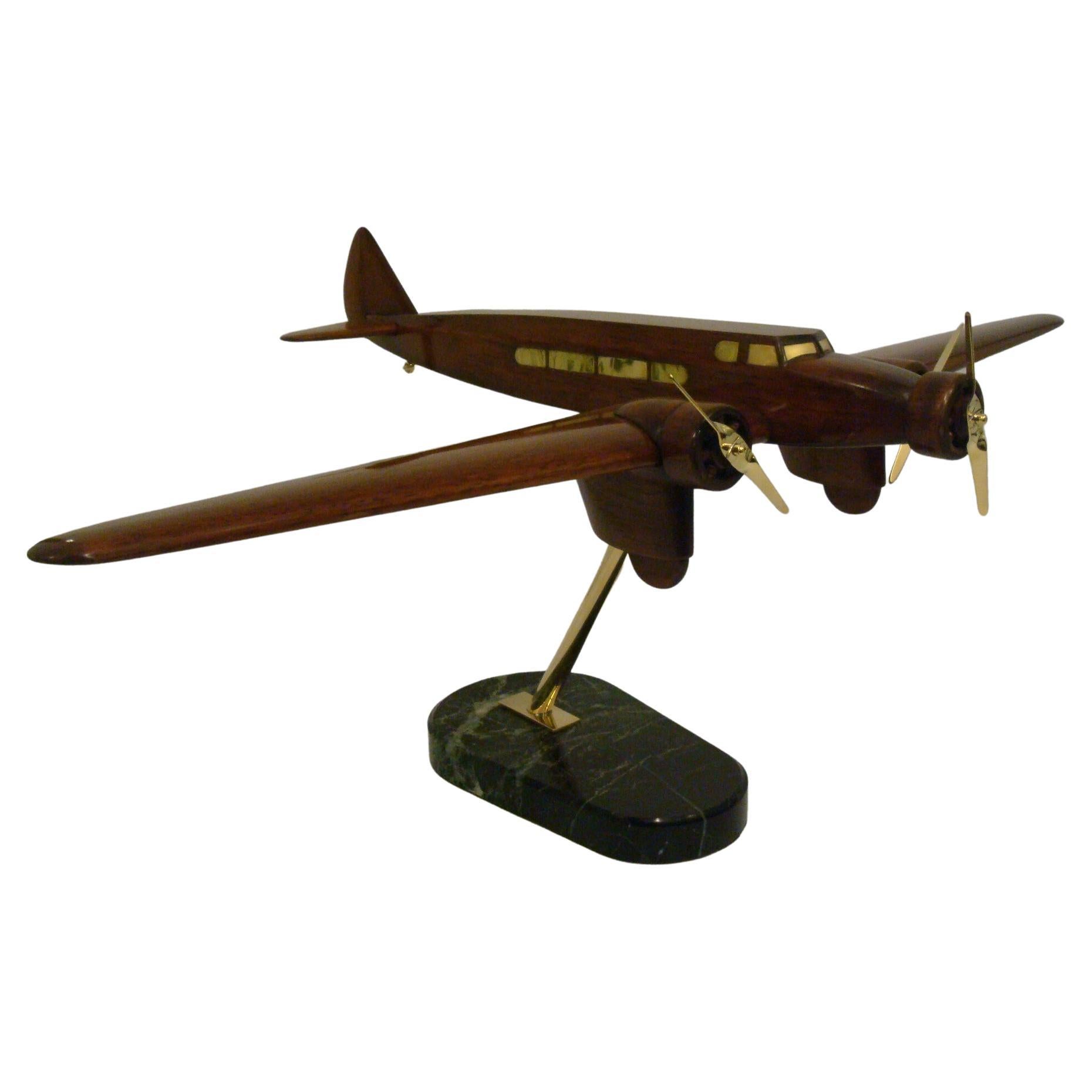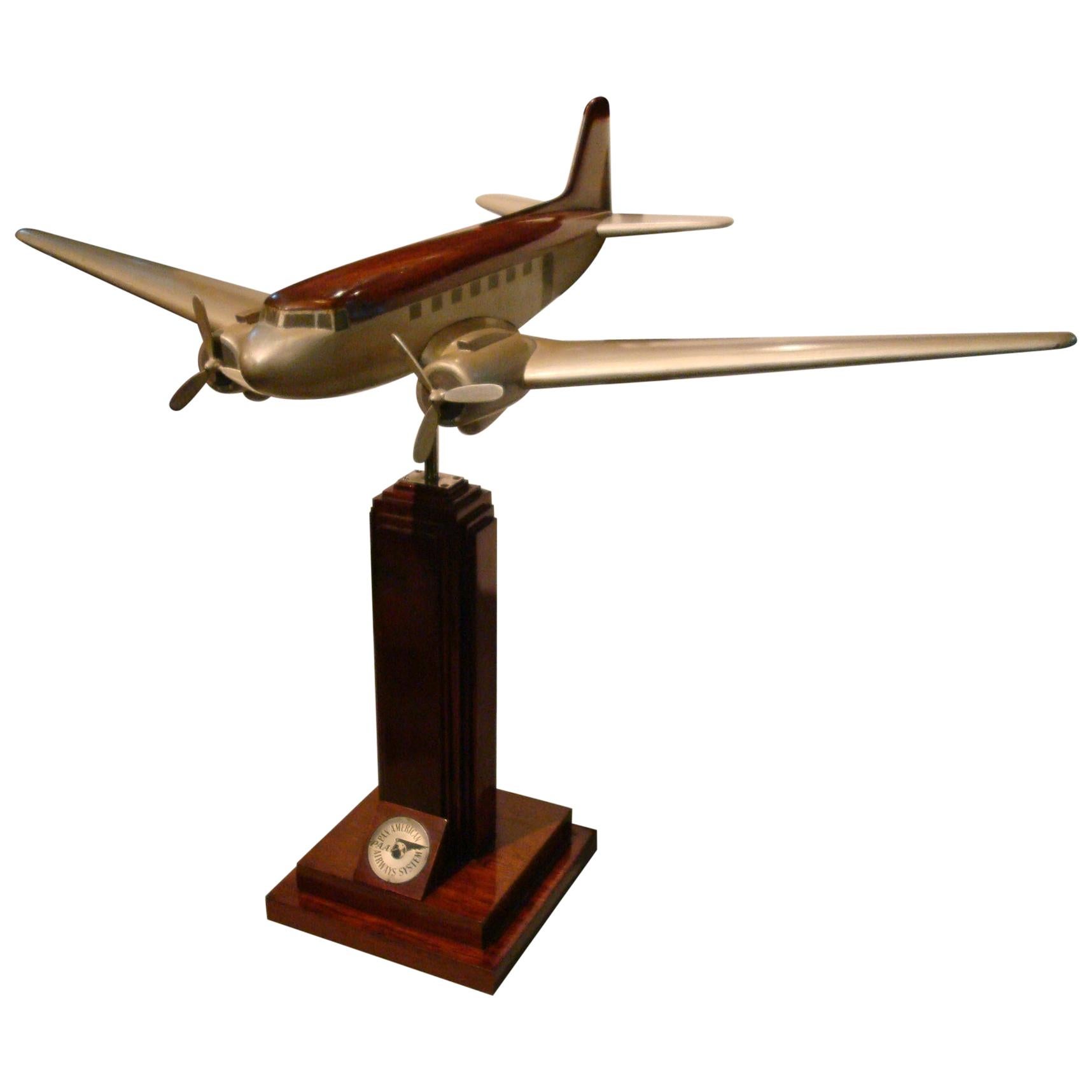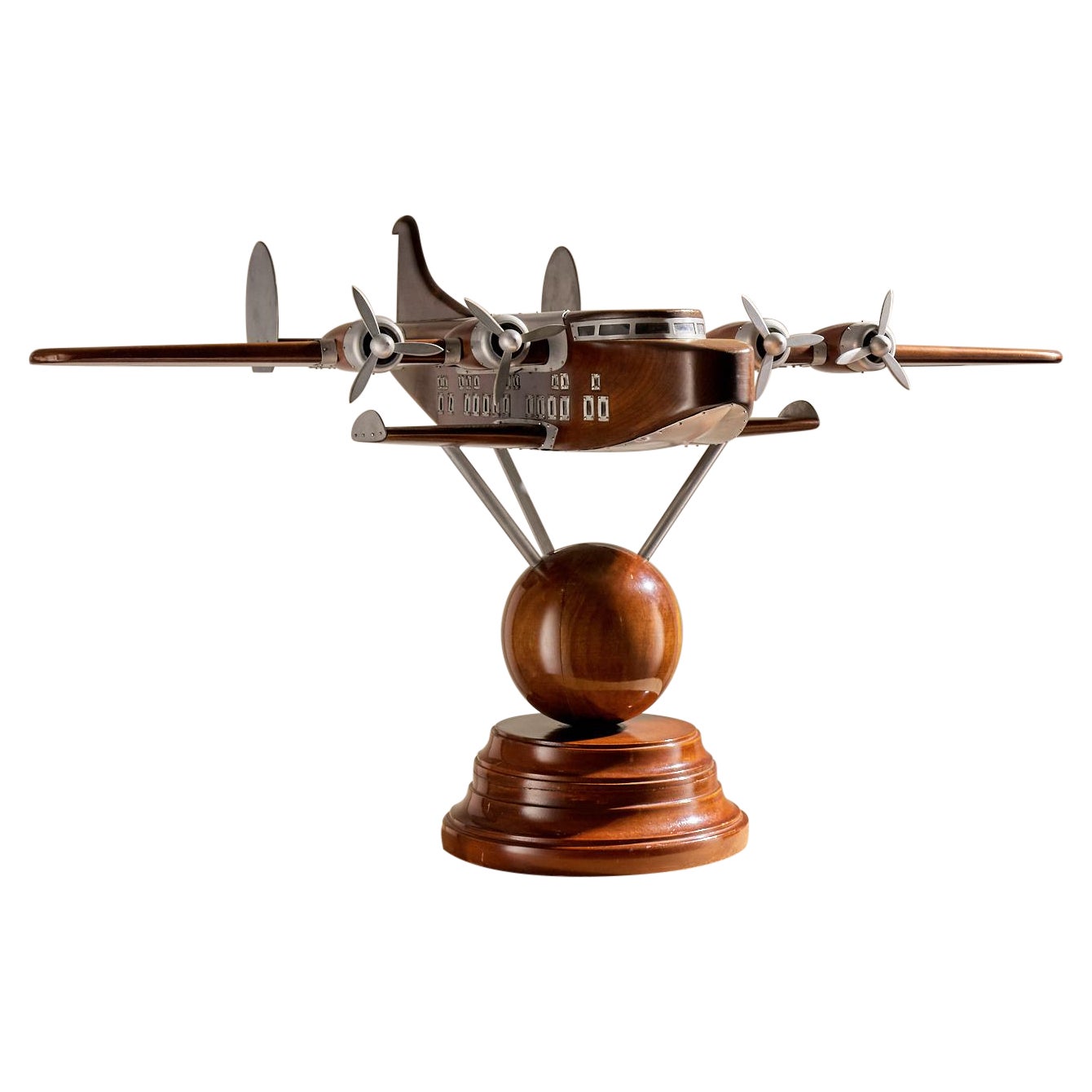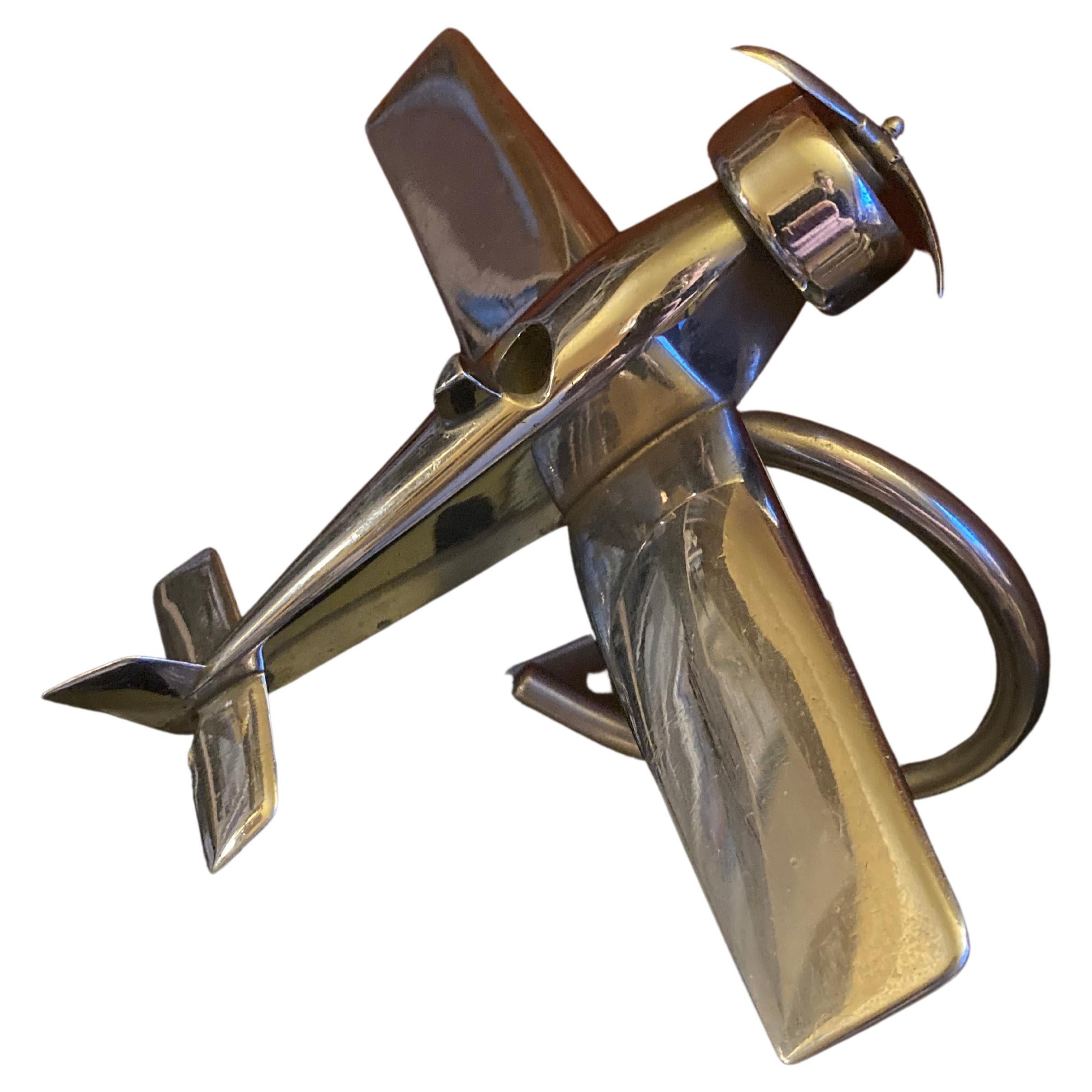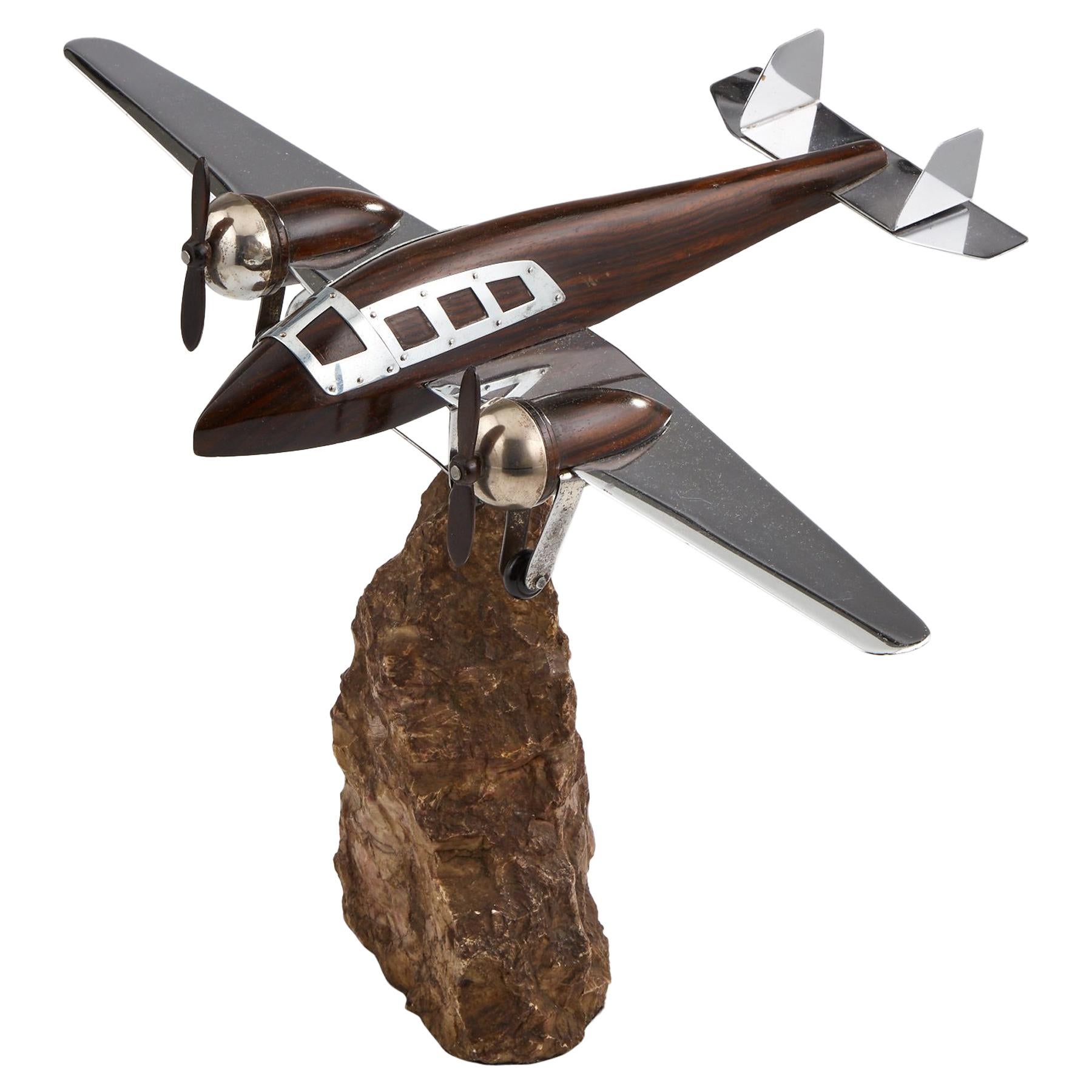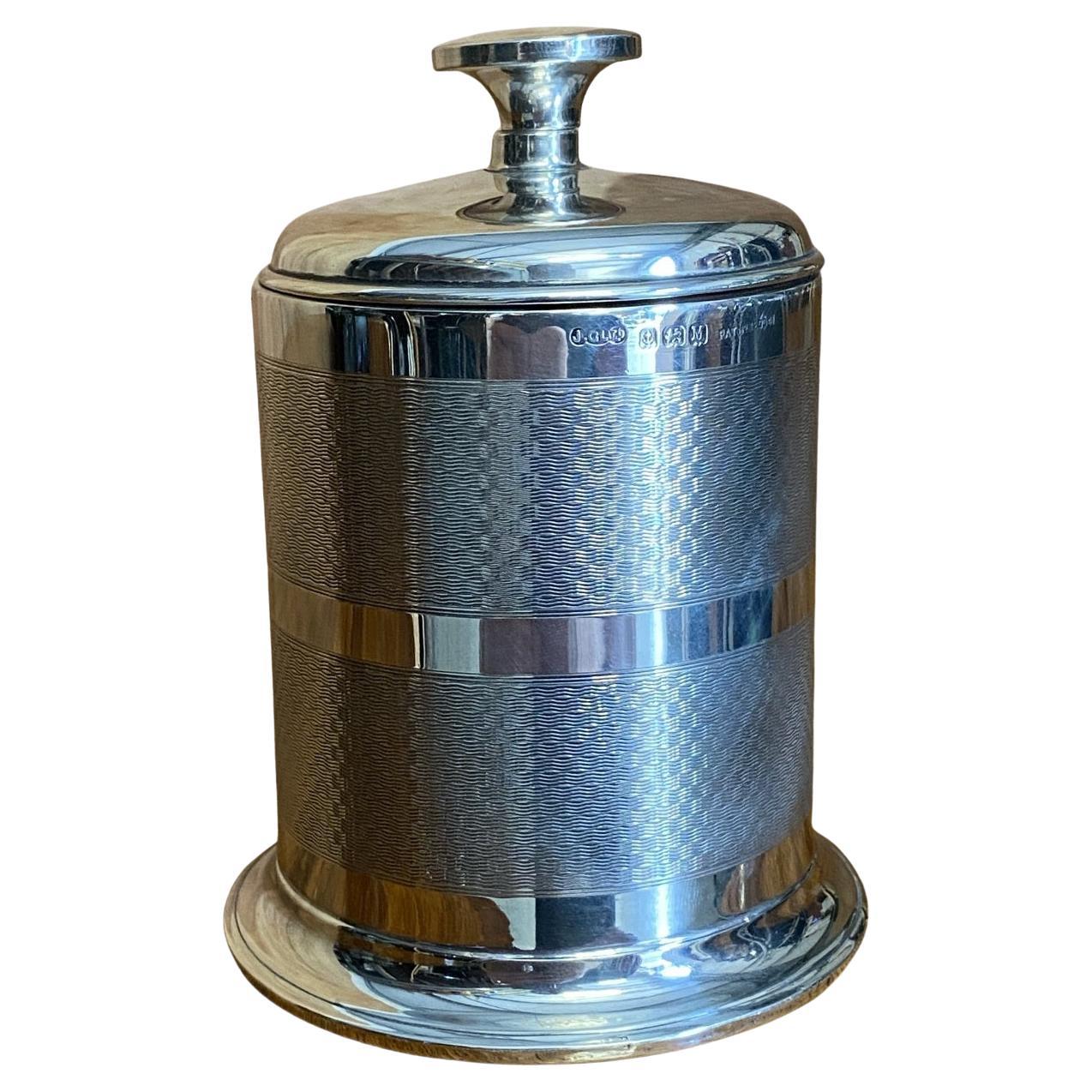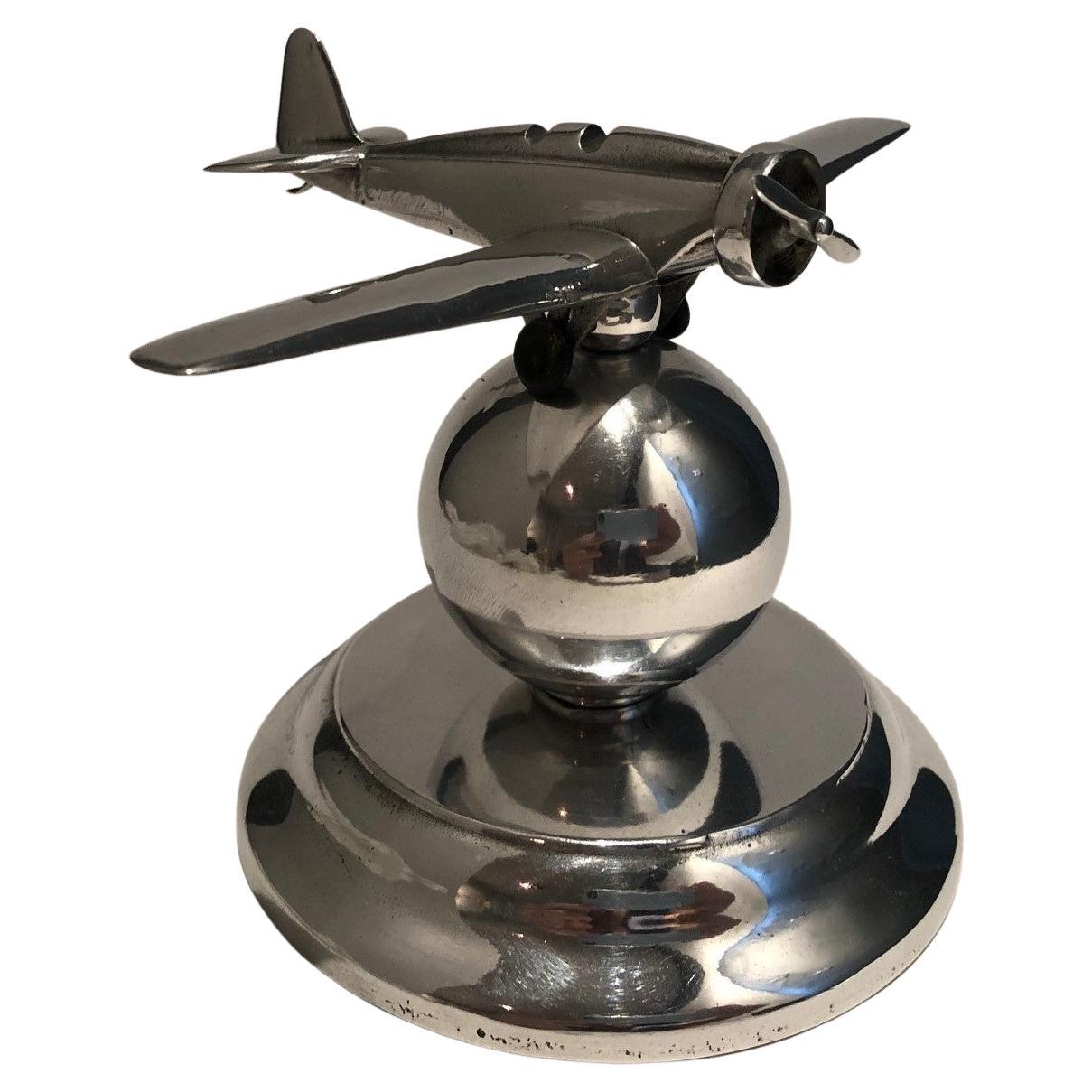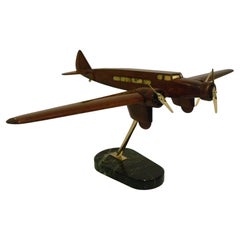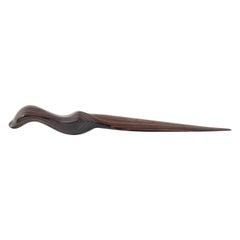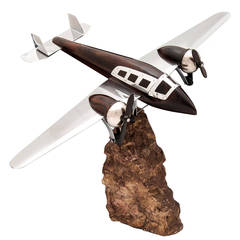
Art Deco Macassar Ebony Model Aeroplane
View Similar Items
1 of 9
Art Deco Macassar Ebony Model Aeroplane
About the Item
You May Also Like
- Art Deco French Caudron, Renault Desk Airplane Model, Late 1930´sLocated in Buenos Aires, OlivosFrench Caudron - Renault Desk Airplane Model. Late 1930´s. Made of Lacquered Wood and Polished Aluminium The C.710 were a series of light fighter aircraft developed by Caudron-Re...Category
Mid-20th Century French Art Deco Aviation Objects
MaterialsAluminum
$2,500 Sale Price34% Off - Art Deco Dewoitine Wooden Counters Desk Model Airplane 1930s FrenchLocated in Buenos Aires, OlivosArt Deco Dewoitine Wooden Counters Desk Model Airplane 1930s French. The Dewoitine was a Art Deco 1930s French eight-passenger airliner built by Dewoitine. The Airplane was an all-metal cantilever low-wing monoplane. The pilot and co-pilot were seated side by side in a cabin located forward of the wing leading edge. A radio operator station was located behind the pilots, and it had a passenger cabin for eight passengers. The landing gear had trouser-type fairings on the main gear legs. The aircraft first flew on 11 July 1933 powered by three Hispano-Suiza 9V radial engines...Category
Mid-20th Century French Art Deco Aviation Objects
MaterialsMarble, Brass
- Macassar Ebony Art Deco Amsterdamse School Letter Opener, 1920sLocated in Amsterdam, NLWonderful and rare Art Deco Amsterdamse School letter opener. Striking Dutch design from the 1920s. Solid macassar ebony and the handle is a stylish shaped otter. In very good ori...Category
Vintage 1920s Dutch Art Deco Letter Openers
MaterialsMacassar
- Art Deco Pan-Am DC3 Wooden Airplane Desk Model, MidcenturyBy Pan American AirwaysLocated in Buenos Aires, OlivosArt Deco / midcentury large DC3 desk aviation model. Pan-Am wooden airplane model. It was in an office of the company in South America. Very good restored conditions. Slight age wear. History Pan American Airways began the first transatlantic passenger service on this day in 1939. Pan American World Airways, as it was to be known, commonly known as Pan Am, was the principal United States international air carrier from the late 1920s until its collapse on December 4, 1991. Founded in 1927 as a scheduled air mail and passenger service operating between Key West, Florida, and Havana, Cuba, the airline became a major company credited with many innovations that shaped the international airline industry, including the widespread use of jet aircraft, jumbo jets, and computerized reservation systems. The history of Pan American Airways is inextricably linked to the expansive vision and singular effort of one man – Juan Trippe. An avid flying enthusiast and pilot, Trippe, only 28 years old when he founded the airline, lined up wealthy investors and powerful government officials from his personal acquaintances in the high-society of the 1920s. However, Pan Am’s first flight was an inauspicious start to its epic saga. In 1927, facing a Post Office deadline for the commencement of mail carriage, Pan Am had no working equipment for its sole airmail contract between Key West and Havana. Fortunately for Pan Am, a pilot with his Fairchild seaplane arrived at Key West and was willing to carry the mail to Cuba for the start up operation. It is fitting that Pan Am’s first flight would be over water, since the airline would Pioneer overseas routes throughout its history. Pan Am’s fortunes took a turn for the better in the fall of 1927. Through the heavy lobbying efforts of Juan Trippe, Pan Am was selected by the United States government to be its “chosen instrument” for overseas operations. Pan Am would enjoy a near monopoly on international routes. Added to Pan Am’s Cuba route were lines serving Mexico, Central America, the Dominican Republic, Haiti and Puerto Rico. Most of these destinations were port cities, which could be reached only by landing on water. Therefore Pan Am made good use of its “flying boats,” the Sikorsky S-38 and S-40. Flights were eventually expanded to serve much of South America as well. EnlargePan Am’s fleet of Clippers allowed the airline to conquer the Pacific in the mid-1930s. The flying boats would later be put to military use in WWII. Just a few years later, Pan Am launched its effort to cross the world’s largest oceans. Survey flights across the Pacific were conducted with the Sikorsky S-42 in 1935, but passenger service required bigger and better aircraft. Accompanied by much fanfare, the Martin M-130 was introduced in 1936, followed by the Boeing 314...Category
Mid-20th Century Unknown Mid-Century Modern Aviation Objects
MaterialsWood
$5,260 Sale Price38% Off - Art Deco Model of a Boeing 314 Clipper Airplane Circa 1938Located in London, GBA superb Art Deco Model of a Boeing 314 Clipper Aeroplane Circa 1938. The Boeing Clipper was a long range Flying Boat made by the Boeing Aircraft Company i...Category
Vintage 1930s American Aviation Objects
MaterialsWood
- Art Deco Chrome Aeroplane from the 30s, Decorative Desk ObjectLocated in Köln, NWDecorative Art Deco chrome airplane on plastic base. Desk decoration. Probably Germany or France of the thirties. The plastic plate is also from the time. Good general condition with...Category
Vintage 1930s Unknown Art Deco Abstract Sculptures
MaterialsMetal, Chrome

